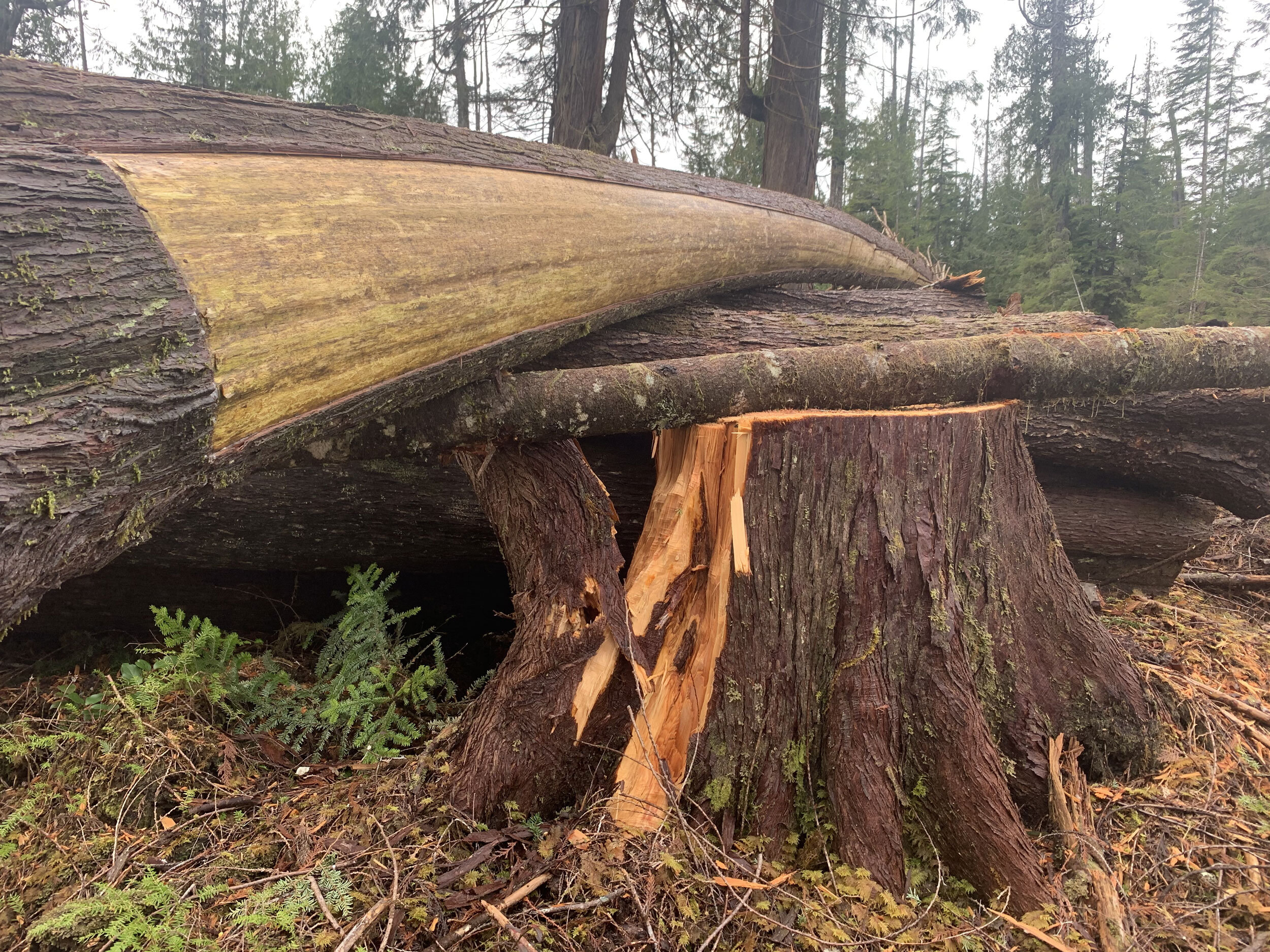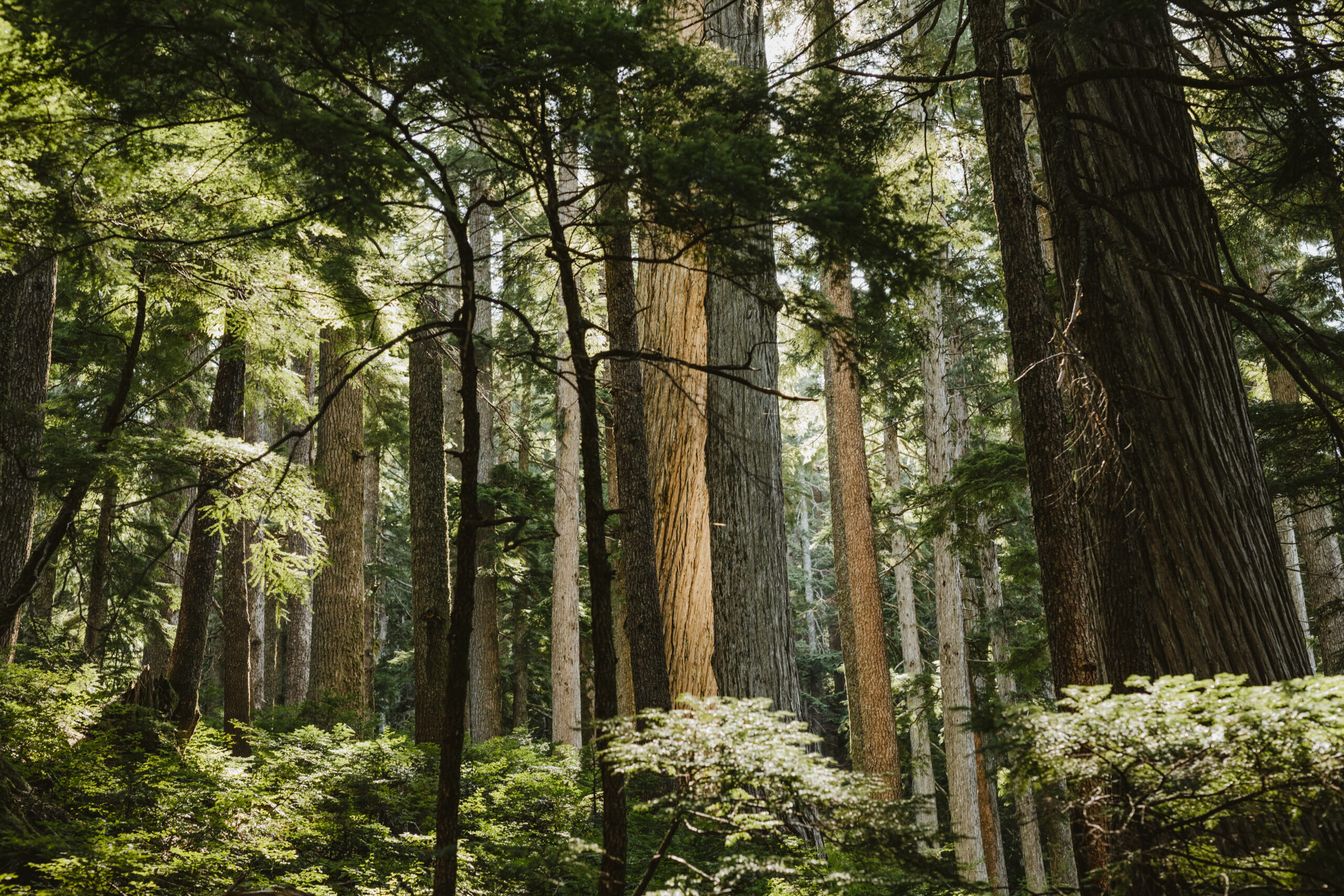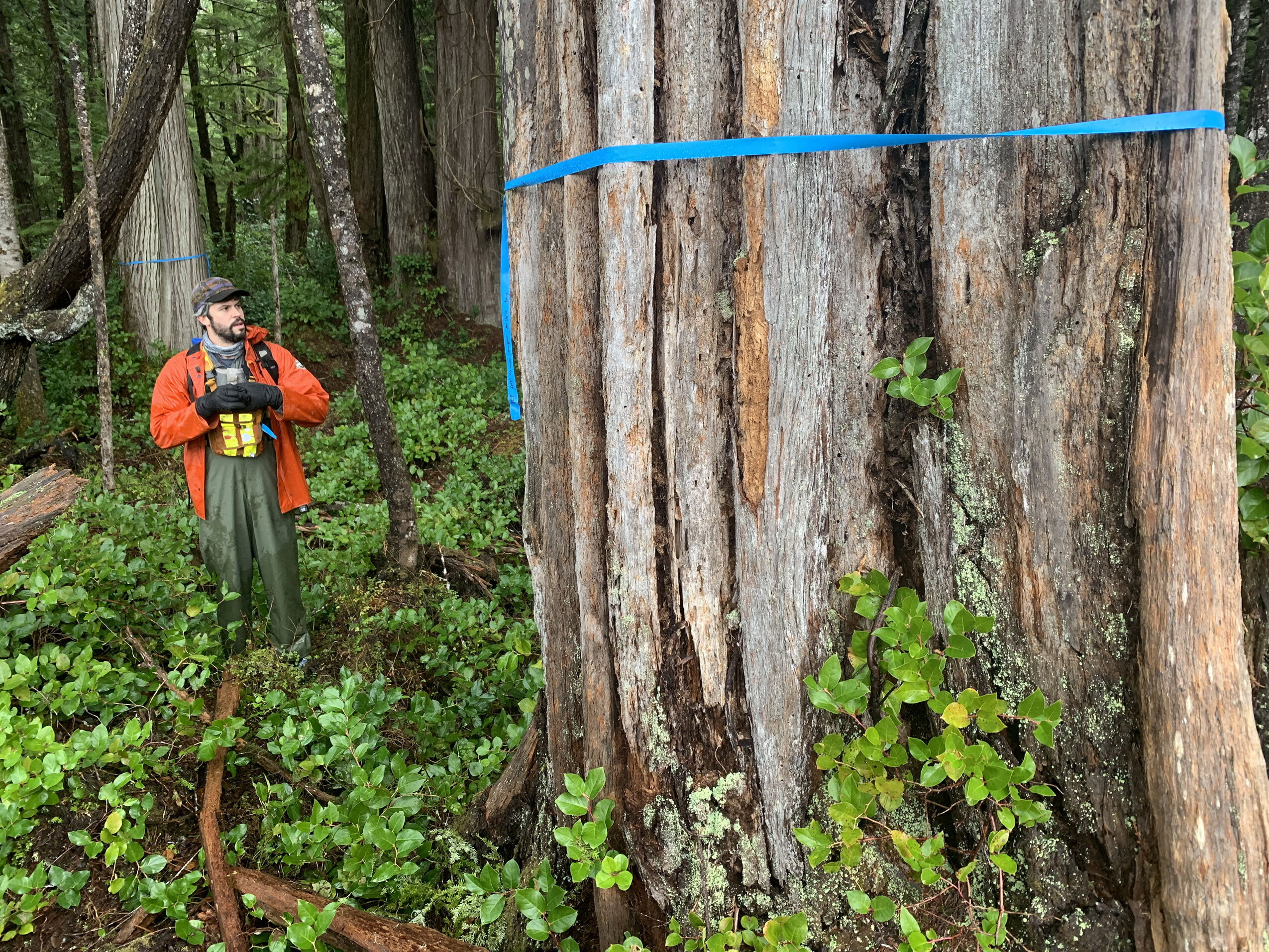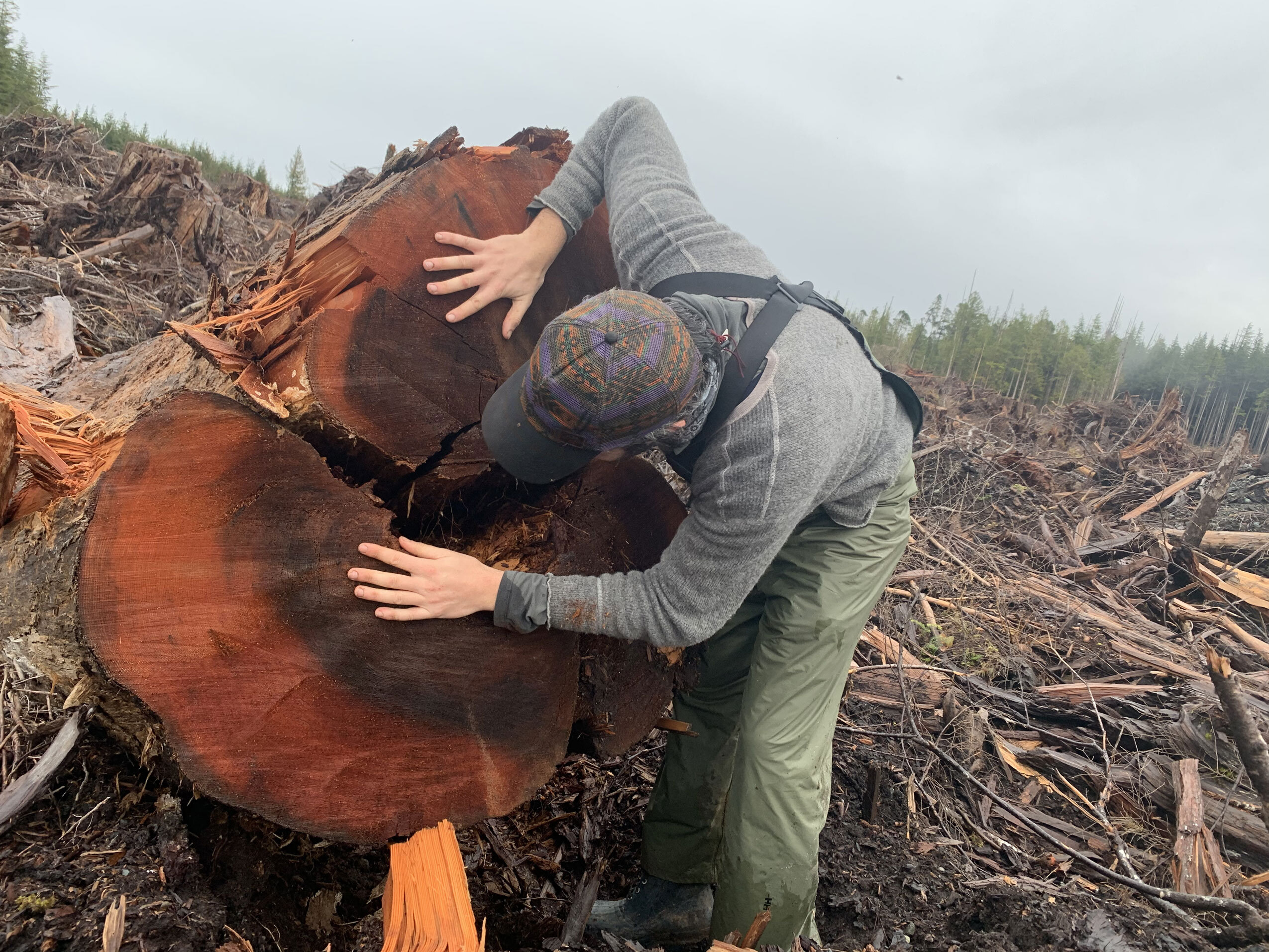
Ontario’s public service heads back to the office, meaning more traffic and emissions
For 15 years and counting, my commute from Mississauga to Toronto has been mired by...
The rules are clear. Sort of.
Culturally modified trees in B.C with marks showing they were used by Indigenous Peoples before 1846 are officially protected. But with little independent oversight, experts say these irreplaceable trees are regularly being cut down by the forestry industry.
The steady loss of culturally modified trees means historical gaps, hiwus Calvin Craigan, Hereditary Chief of the shíshálh Nation, said.
“A whole way of life has disappeared for my people and culturally modified trees are part of demonstrating that we have been here for thousands of years, using different resources in our forests,” he said.
Trees with marks where bark or boards were removed show how communities used — and continue to use — red and yellow cedar to build everything from canoes to houses, with soft inner bark used for weaving into clothes, mats, blankets and diapers.
Tree rings make it possible to identify the exact year bark was stripped and can show when and where people lived, helping to piece together histories fractured by colonization.

“The critical importance of this point is that … it is a physical marker of our territory. That we were there and we used it,” ‘Namgis First Nation elected Chief Councillor Don Svanvik said.
Culturally modified trees can help reclaim jurisdiction over territory, Svanvik added. “This is the way to get the evidence,” he said. “We still need to demonstrate that we were on this land.”
But culturally modified trees are frequently being logged, sources told The Narwhal.
“[Culturally modified trees] are being destroyed regularly because a lot are getting overlooked in archaeological impact assessments — when they have assessments,” according to Jacob Earnshaw, past president of the Archaeological Society of B.C, who specializes in studying culturally modified trees.
If an area of what the government refers to as “high archaeological potential” overlaps with an area that a company wants to log, it may require an archeological impact assessment. Some areas are deemed by the province to be too far inland or too difficult to access to be likely to contain culturally modified trees, so companies are not always obliged to look for archaeological sites before logging.
Earnshaw, who recently published a paper concluding industrial logging has caused the “erasure of cultural forests and thus Indigenous history from the landscape,” said he’s concerned by insufficient audits being done on cutblocks. “No one sees the [culturally modified trees] that are logged,” he said.
The current system of protecting culturally modified trees is known as a “professional reliance model.”
When an area is deemed likely to have culturally modified trees the company must hire its own archaeologist to conduct a survey and also consult First Nations. But when pre-1846 culturally modified trees are found — even if they are “protected” — the logging contractor can apply to the B.C. Archaeology Branch for a site alteration permit.
Then, unless the local First Nation has the resources and capacity to employ its own archaeologists and fight for protection, changing the logging plans, companies can be given a permit to cut trees down provided they record dates and write a report.
“The site alteration permit process is such a massive loophole in protecting Indigenous cultural heritage that you could drive a logging truck full of culturally modified trees through it,” Mark Worthing, who has an extensive history studying culturally modified trees and helps some Vancouver Island nations with tree surveys, said.
Hereditary Chief (Makwala) Rande Cook of the Ma’amtagila tribe of the Kwakwaka’wakw Nation, agreed the current system lacks accountability.
“A lot of these areas are remote, so there’s nobody there to actually see what is happening,” said Cook, whose territory spans northeast Vancouver Island and the Central Coast.

Though the exact number is unknown, the Ministry of Forests estimates there are 7,687 culturally modified tree sites across the province. Each site can have anywhere from one to thousands of culturally significant trees.
“I’ve seen some where the bark was pulled 300 or 400 years ago, which makes our presence long before European contact very clear,” Cook said. “These markers geographically tie us to that land … Every time industry cuts one of those [culturally modified trees] down they are removing the evidence of our existence in that area.”
Culturally modified trees are not always easy to identify. The tree may have grown around the marks, or scars can be caused by natural weathering rather than stripping — that uncertainty means archaeologists may disagree about whether or not it can be cut.
On the Sunshine Coast, the environmental group Elphinstone Logging Focus won a decade-long battle proving the presence of culturally modified trees in an area known as the Dakota Bowl.
During the dispute, a company hired by B.C. Timber Sales, which wanted to log the area and maintained the trees were not culturally modified, cut down 13 yellow cedars, including one that was 1,100 years old. They did so in an effort to prove they were not culturally modified trees.
After four different assessments, the final decision found at least 77 trees slated for logging were culturally modified trees and therefore the company couldn’t log them. These trees are now registered with B.C.’s Heritage Branch and a 2021 agreement with the Sḵwx̱wú7mesh Úxwumixw (Squamish Nation) means the cutblock is now protected.

Ross Muirhead, longtime forest campaigner with Elphinstone Logging Focus, believes the root of the problem is professional reliance.
“The government doesn’t want to hire its own archaeologists so they allow the companies to do it. That’s when you get these conflicts of interest,” said Muirhead, who would like to see such assessments peer-reviewed.
Worthing believes the problem is not so much what the government is doing, but what it is not doing.
“Most of the time, when it comes to archaeological heritage on the land base, it’s a dangerous don’t-ask-don’t-tell scenario,” Worthing told The Narwhal.
“Nobody really enforces the law, with the exception of some nations who are fortunate enough to have natural resource stewardship managers or even culturally modified tree survey teams, meaning they can independently negotiate directly with a licensee or forest company,” Worthing said.

The Narwhal reached out to the B.C. Council of Forest Industries, which represents the forest industry in the province. Alexa Young, the organization’s vice president of government and public affairs, said the Forest Ministry would be best positioned to answer questions about culturally modified trees.
In response to questions from The Narwhal, the Ministry of Forests sent a background statement saying it is the responsibility of the logging company to determine if archaeological sites — whether they’re registered or not — will be impacted by logging prior to harvesting.
But it’s not in the company’s interest to identify culturally modified trees or other archaeological sites, Cook said. “Industry and the government … are all working together. It’s like a system that’s tightly knit together to serve their own needs and that is the frustrating part.”
Finding culturally modified trees disrupts logging plans and frequently areas are cut before communities have had a chance to assess the historical importance, Cook explained.
“Often there’s nothing left. Companies are blasting roads and clearing and just not taking into consideration how important these [culturally modified trees] actually are.”
Legislation allows for fines of up to $1 million and imprisonment for up to two years for destruction or unauthorized disturbance of an archaeological site, but enforcement on logging sites is “weak to non-existent,” according to Chris Verral, president of the B.C. Association of Professional Archaeologists.
“It also very much depends on whether it gets reported at all. I am almost certain — and I think most of my colleagues would agree — that there are companies and people out there just cutting these things down and just hiding it. If it doesn’t get observed or called out, then enforcement doesn’t do anything,” he said.
“It seems to me to be left in the hands of the company a little too much,” Verral added. “I think the province could stand to bolster those protections and the enforcement process.”
When asked how many fines have been levied in B.C., the Forests Ministry told The Narwhal their compliance and enforcement branch has conducted 75 inspections related to culturally modified trees over the last three years. Of the sites inspected, 14 were found to be non-compliant and six “resulted in an enforcement action.”
“It is important to note that inspections and enforcement actions related to [culturally modified trees] are often linked to other issues such as unauthorized harvest, unauthorized occupation or use of Crown land and other illegal or unpermitted activity,” a ministry statement said.
Under the Heritage Conservation Act, sites containing artifacts or physical evidence of human habitation or use before 1846 – when the Oregon Treaty ceded territory north of the 49th parallel to Britain — should be registered as archaeological sites.
But trees modified after this date “are not protected and can be logged without any involvement of the regulator,” Verral explained.
“It’s a very arbitrary date. I think most archaeologists would agree with me that it’s not really reflective of anything we actually see on the ground,” he said.
“It doesn’t reflect reality and it doesn’t really offer robust protection.”
Protection of trees from after 1846 is something that many, including Cook, want to see change.
“It really should be 2022,” he said, adding that all trees need better protection. “I think like any other treaty and agreements nothing has been honoured. [Culturally modified trees] are still being cut down daily by industry.”

When asked about protection for trees dated after 1846, the Ministry of Forests’ statement said: “The Heritage Conservation Act provides automatic protection to sites that pre-date 1846, whether known or as-yet unrecorded, on private and public land.”
“This does not mean that all culturally modified trees that date to post-1846 are not protected, only that they do not receive the protection automatically.”
In response to the government’s statement, Worthing said: “Clearly the ministry is suffering from regulatory dissonance with the reality of cultural heritage features like culturally modified forests and the amount of destruction that logging companies are responsible for every day in B.C.”
The Ministry of Forests said it is currently working to transform the Heritage Conservation Act to bring it into alignment with the United Nations Declaration on the Rights of Indigenous Peoples.
“With respect to [culturally modified trees] dated after 1846, B.C. has heard the concerns of First Nations and others, and is working to improve protections and update the Heritage Conservation Act.”
‘Namgis First Nation has 1,923 members, of which 573 live on its territory that stretches over the northeast coast of Vancouver Island. Protecting heritage is a priority for the nation and it has developed a good relationship with Western Forest Products and Mosaic, the major companies working in the area, according to Chief Councillor Svanvik.
‘Namgis has its own culturally modified trees teams and hires archaeologists, which are paid for by the logging industry, he said.
“We have our own crew that goes out and looks at every block that is proposed to be logged and we have found lots of culturally modified trees,” Svanvik said.
“We are involved early in the process and, if we find [culturally modified trees], that goes to the company and they plan around it,” Svanvik added.
“We told them that’s the way we want to do it. We’ve held conversations and times have changed. It’s not the same as it was even 20 years ago,” Svanvik said, acknowledging many trees were probably lost before any thought was given to protection.
Another important piece is the information the trees and other sites provide about the lives of ancestors, Svanvik said.
“For me, it has been very enlightening to come to the realization that our ancestors were foresters,” he said.
Bark harvesting is an art still practiced on ‘Namgis territory by John Macko. He’s using skills passed down through generations to make headpieces, skirts, masks and other regalia.
A key to protecting the big trees and the history they contain is ‘Namgis members got together at a general meeting and agreed on the path forward, Macko told The Narwhal.
“We don’t allow old-growth logging. We only let them log the young stuff,” he said.
When Macko peels bark he looks for 50- to 60-year-old trees that are going to be logged rather than the big, old trees.
However, not every nation has the capacity to do what ‘Namgis First Nation is doing.
“It’s difficult to put the energy into the other things we need to do and it can be really challenging, particularly for smaller nations,” Svanvik said.
While some nations have the capacity to employ archaeologists and conduct their own surveys, due to the ongoing impacts of colonization others do not have the financial means, staff or historical knowledge to adequately respond when a company submits a logging plan, he added.
“We are all funded to the bare minimum. We are kept extremely busy just trying to keep things going,” Svanvik said, pointing to crises such as struggling salmon populations and nations who do not have clean drinking water. “We’re prisoners of colonization and we’re too busy to escape.”
Enbridge Gas will face Waterloo Region in a hearing before the Ontario Energy Board to renew an agreement that would allow the company to continue...
Continue reading
For 15 years and counting, my commute from Mississauga to Toronto has been mired by...

For our last weekly newsletter of the year, we wanted to share some highlights from...

The fossil fuel giant says its agreement to build pipelines without paying for the right...